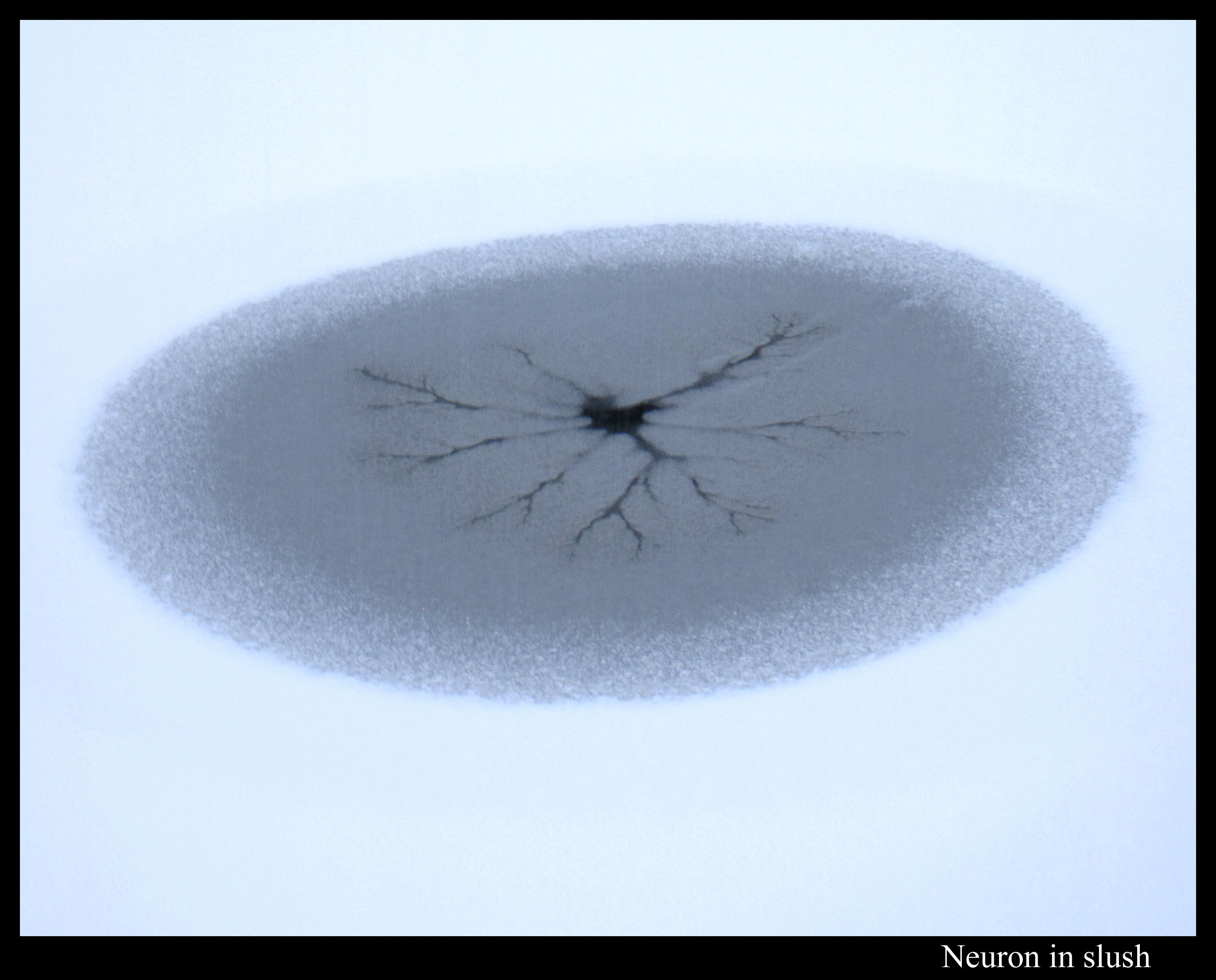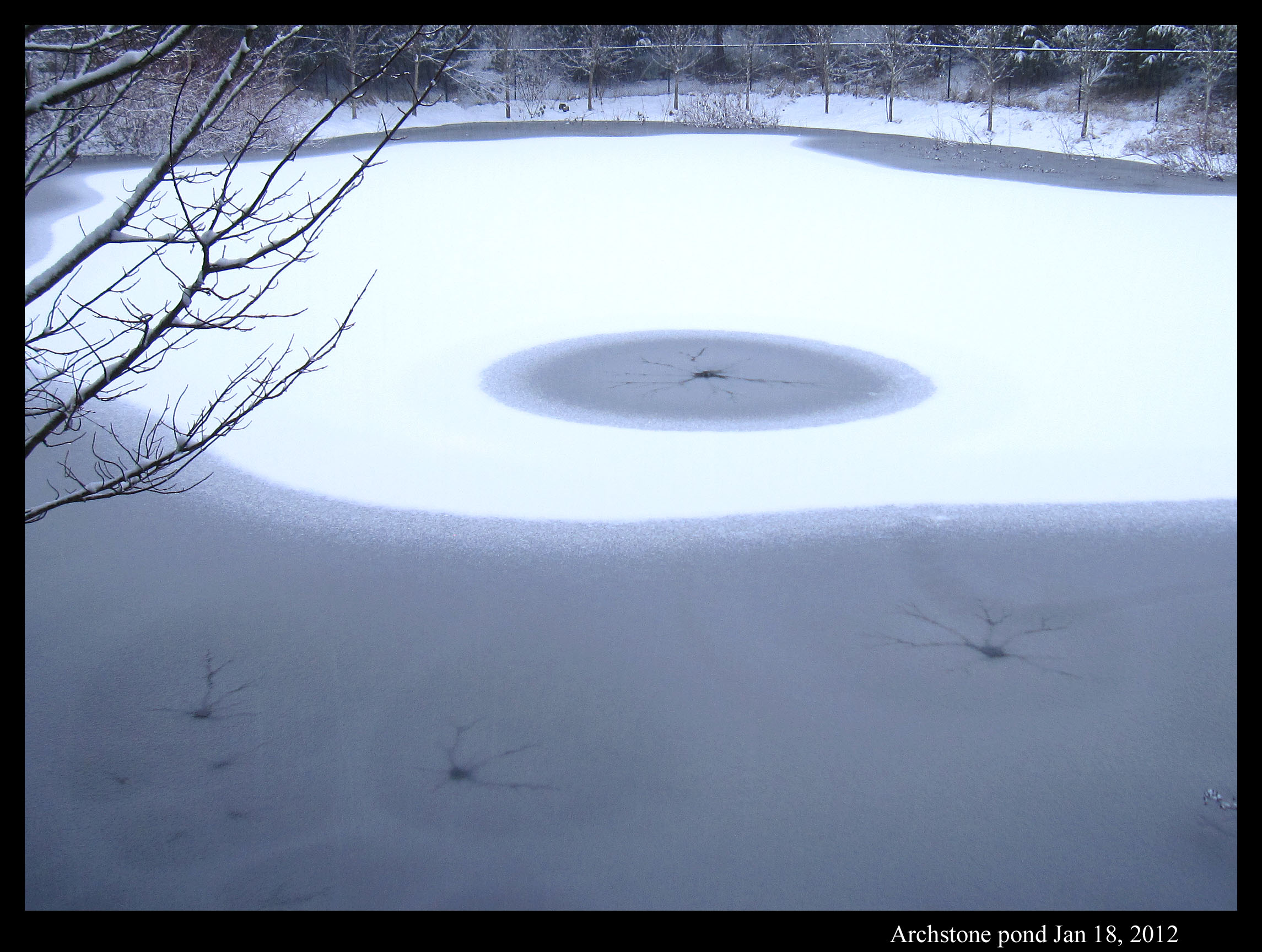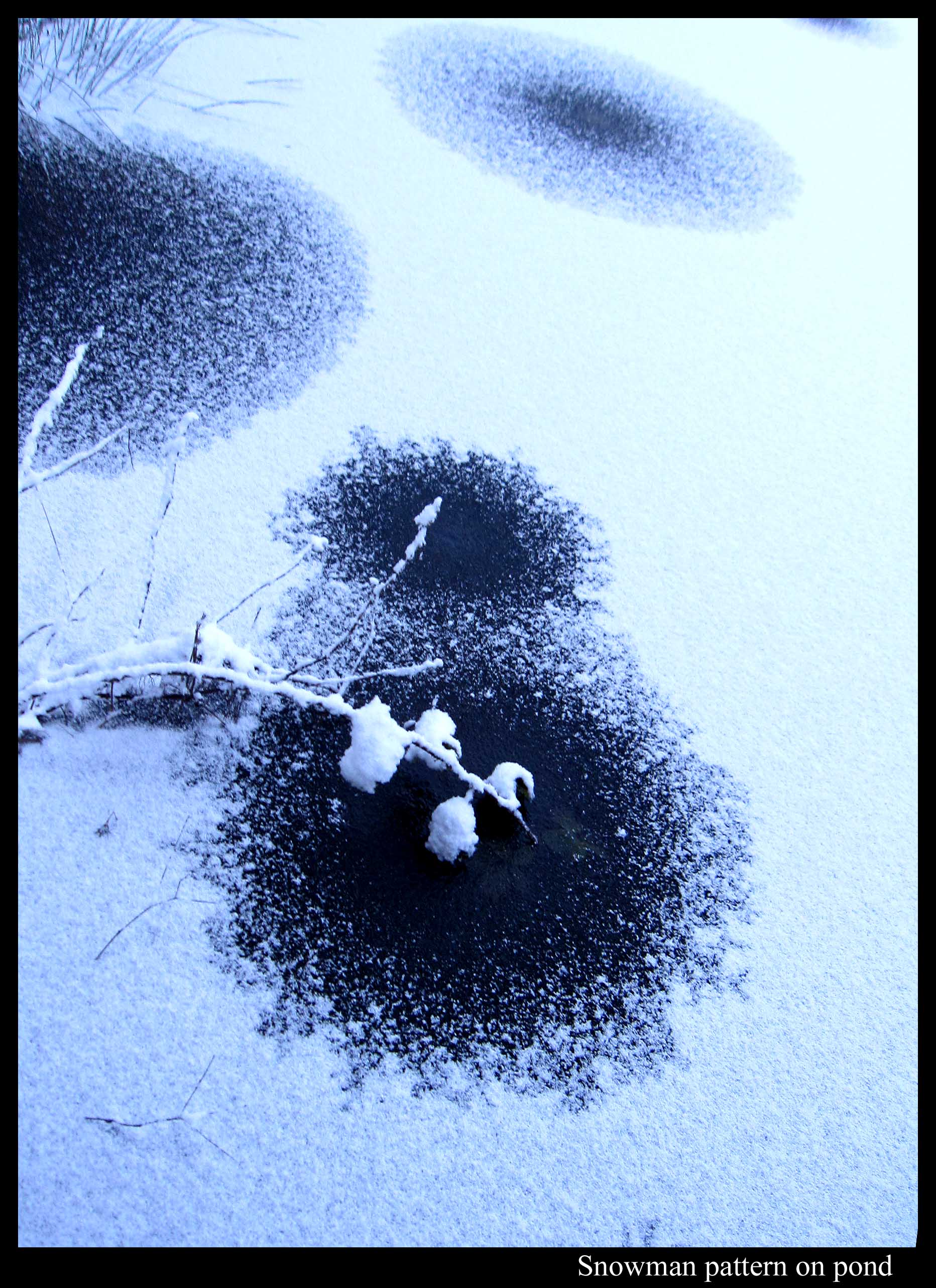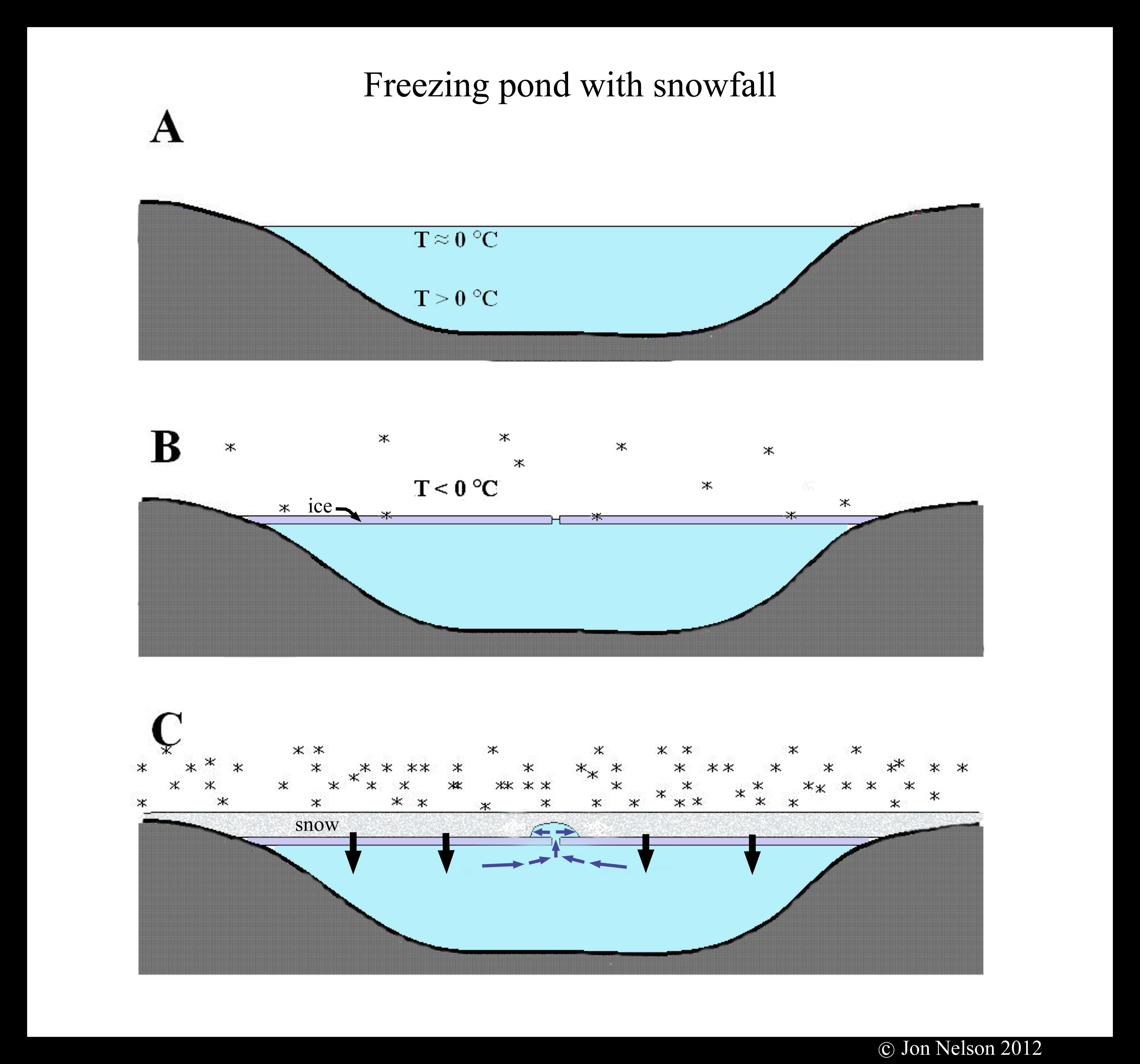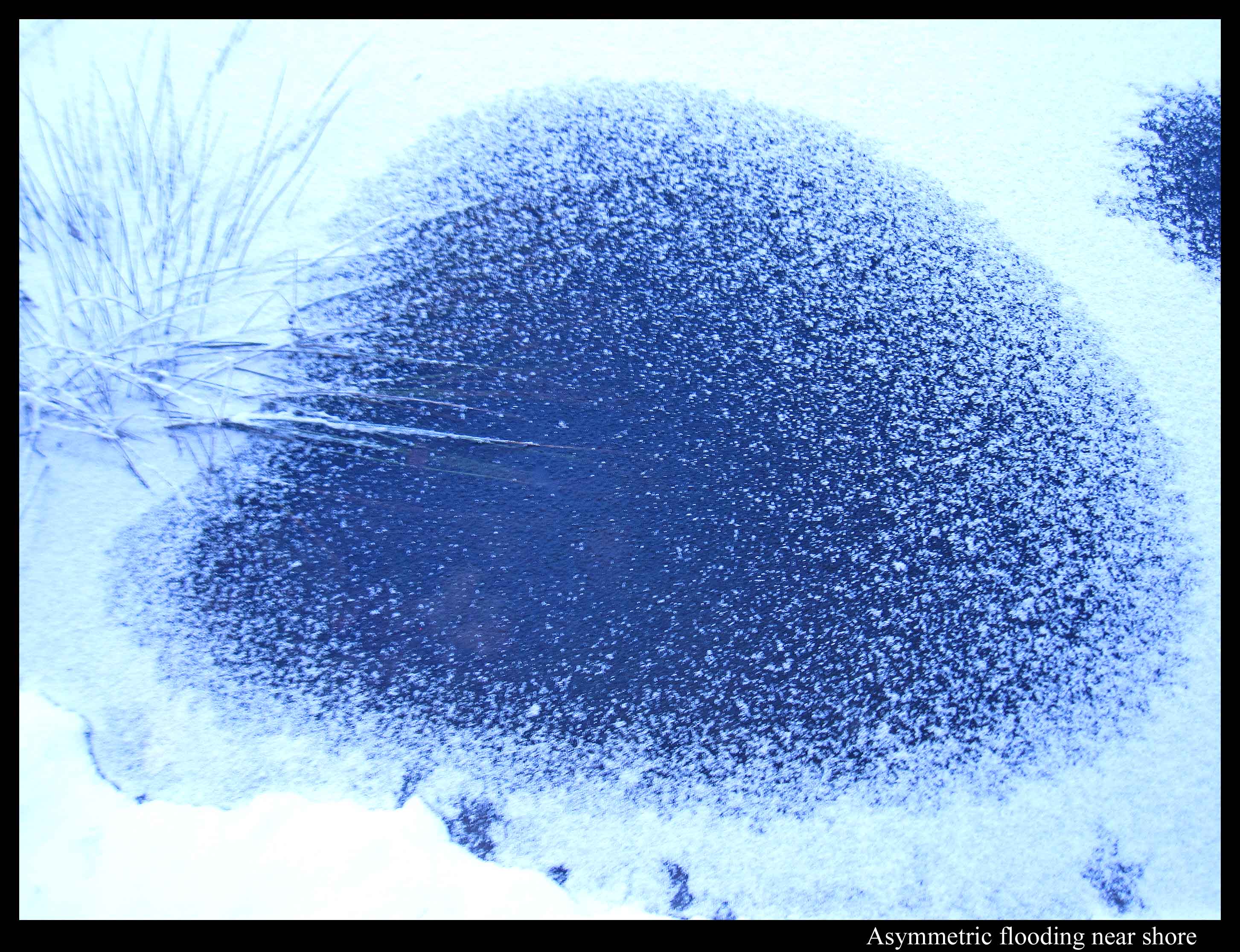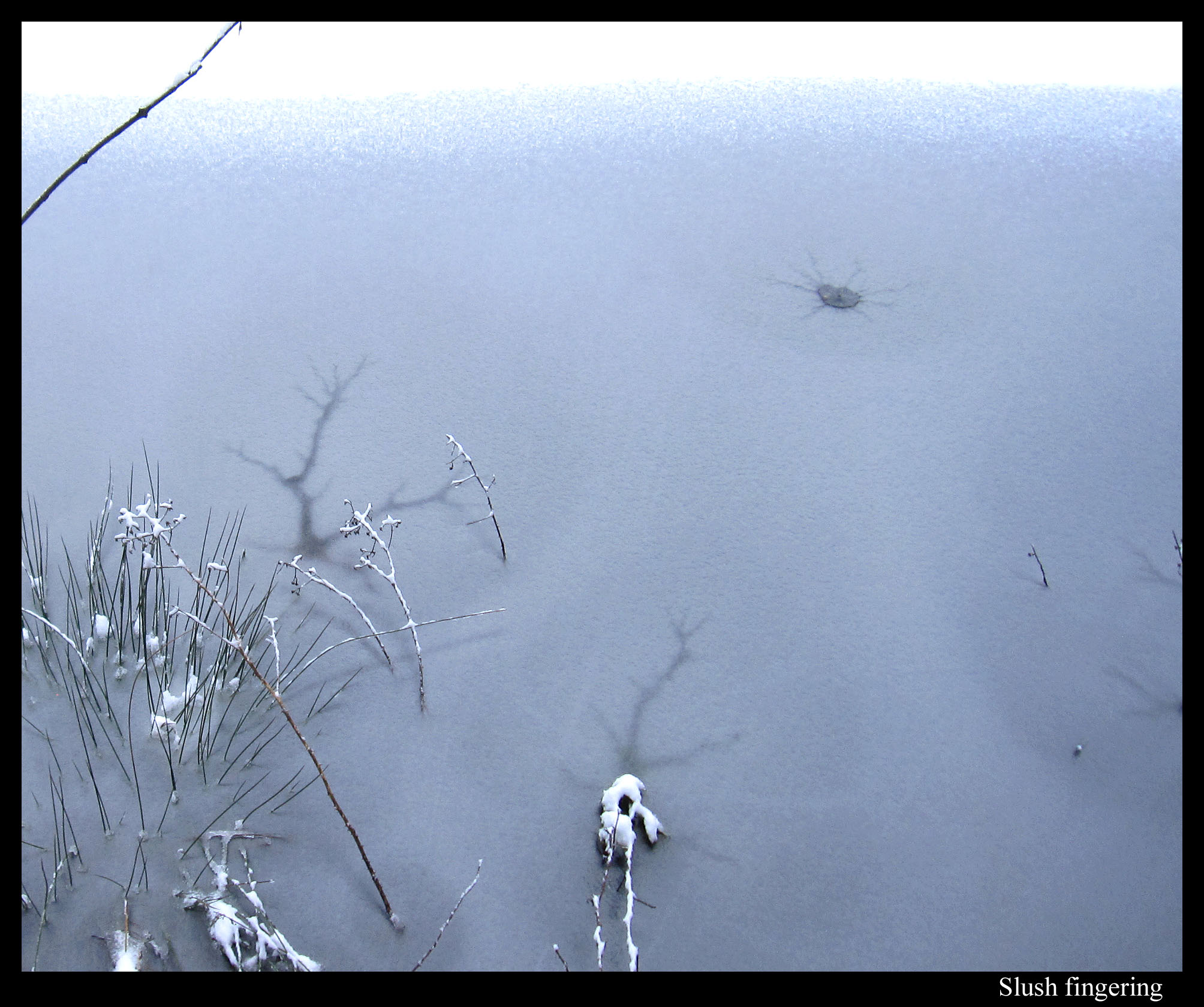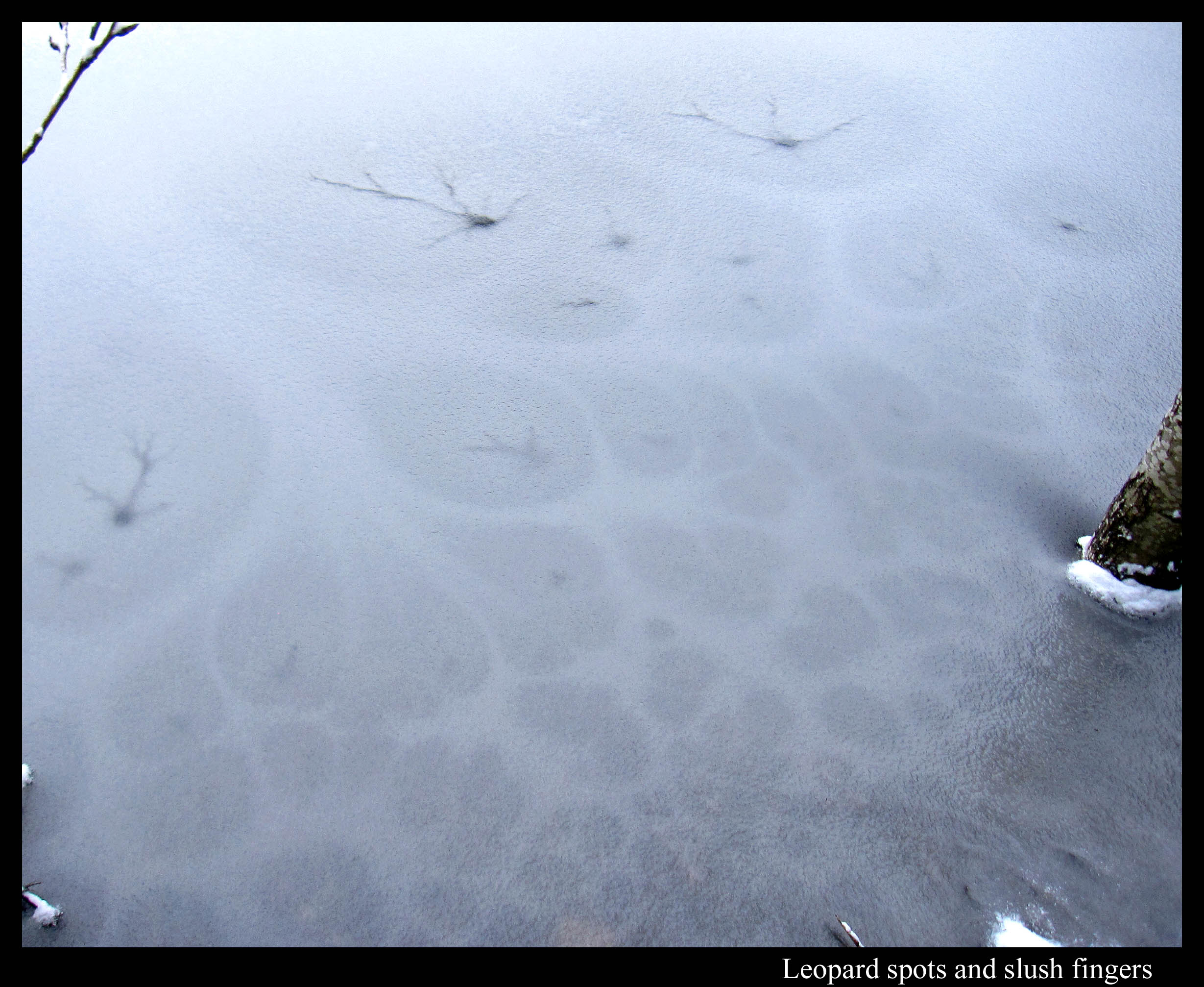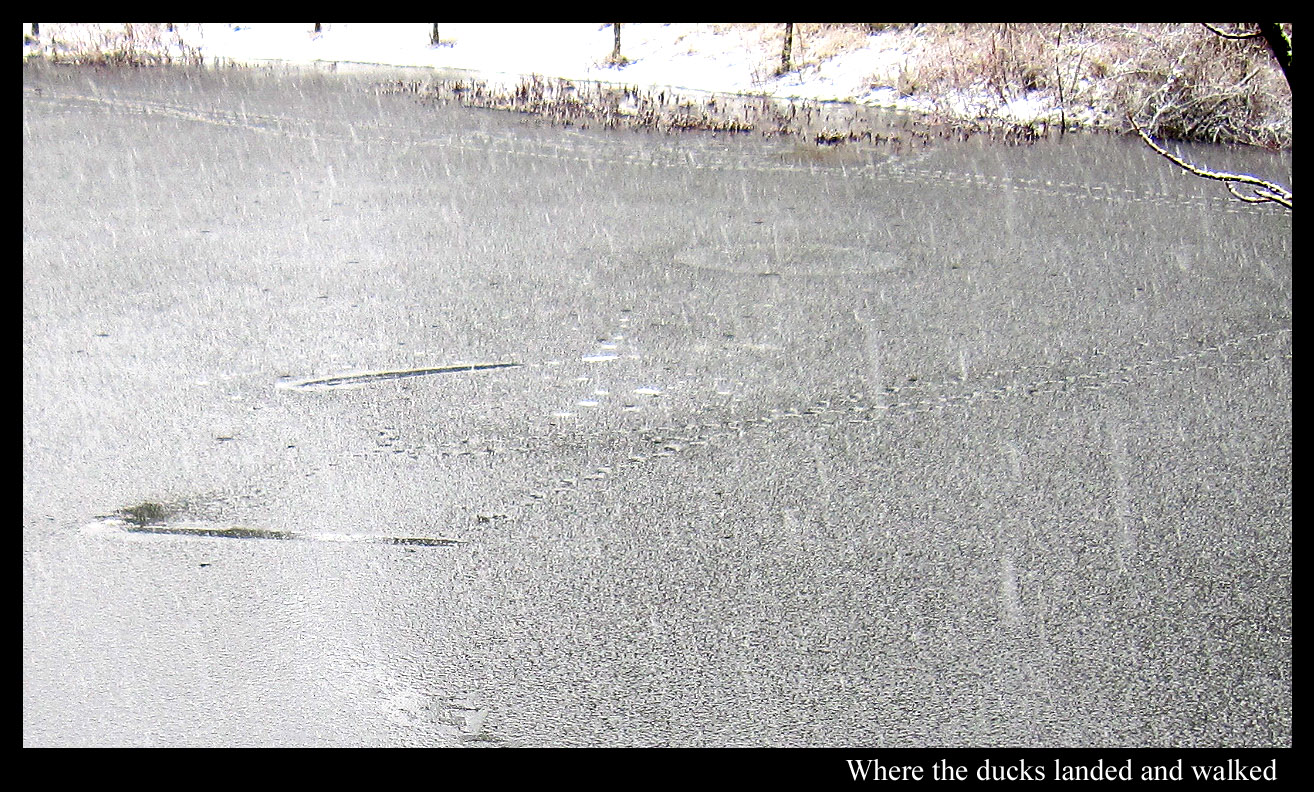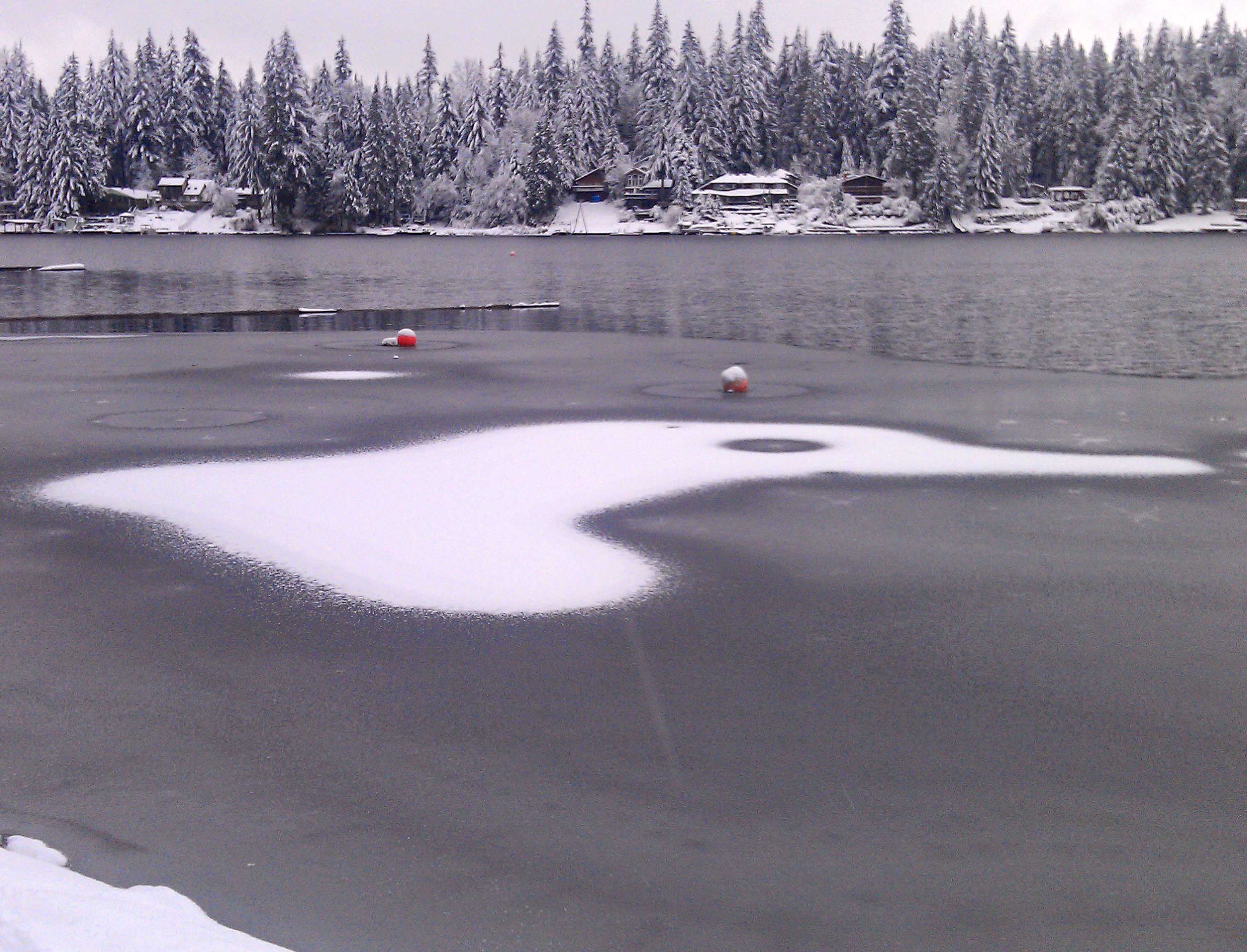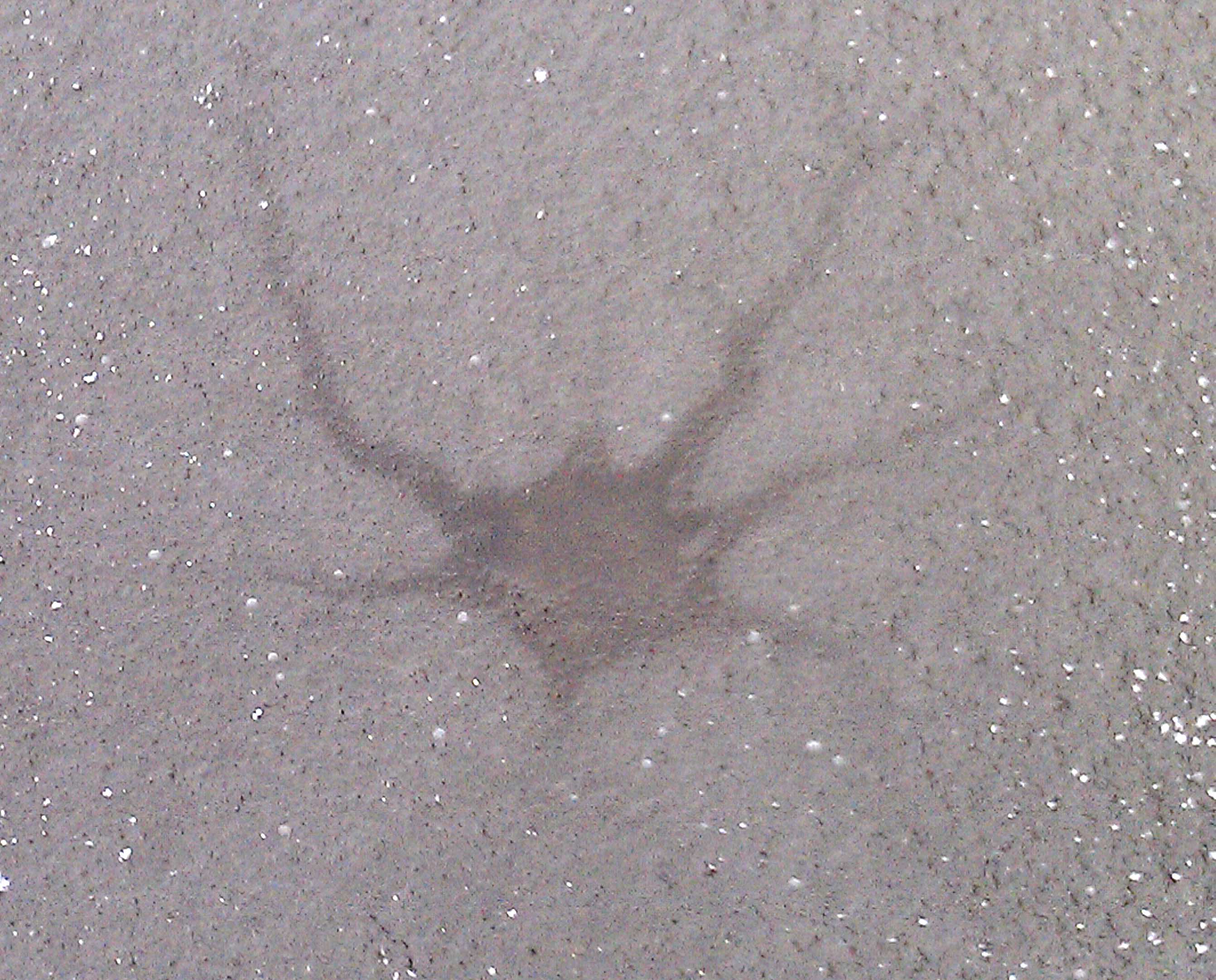| « Caution! | Snow on a Freshly Frozen Pond » |
Slush Fingering and Other Pond Patterns
Here in the Pacific Northwest, we just had our first snowfalls of the season. On the weekend, we had 1 – 2 inches. This was followed on Wednesday by what the Seattle Times newspaper was calling a “megastorm”. But in the end, most areas in the area got only a few inches. Here in Redmond, we had 4 – 5 inches. And though the temperature barely dipped below freezing, I had several opportunities to observe snow patterns on the neighboring pond.
Or maybe I should say slush patterns. (Slush is a roughly uniform mixture of water and snow or ice.) Take the viscous fingering pattern I mentioned in my pond-ice post of a few days ago. Here is a similar type of pattern, except this looks like a neuron dendrite inside an egg.
Unlike the Boulder ice in that previous post, the ice layer on this pond was way too thin for me to walk on. Perhaps that’s a key to understanding why the patterns here instead had darker regions near their center. I don’t know. Anyway, the pond had a few such regions in which the water created dendrite-like fingering.
On the first snowfall, the pond had more circles with dark centers, but perhaps because the amount of snow was less, there was no discernable fingering near the centers, just dark centers caused by more uniform flooding.
In general, the basic layering was liquid below, clear and solid ice above, slush (or frozen slush) on top of the ice, and snow on top of the slush. (There can also be slush under a layer of solid ice.) The first snowstorm, though it had less snow, was preceded by colder weather. So, the clear ice was a little thicker and the slush layer thinner. Between the snowstorms, the ice melted and for awhile we had just slush on top of the liquid water.
The circular and fingering patterns arise when water gets pressed out of a small hole in the ice. The water then floods the ice as sketched below.
First of all, the top layer of water must cool to 0 °C. To cool to this temperature, the entire pond must first cool to about 4 °C, the temperature at which water has its maximum density (see A in the sketch).
Why 4 °C? The cooling occurs through the top surface. And when the temperature is above 4 °C, the temperature of maximum density, any cooling of the upper layer of water will increase the density of this water. Having a higher density, this cooled water will sink. But once the temperature decreases below 4 °C, any further cooling of the top layer will decrease its density – it will be lighter and tend to float at the top surface. So, as the pond cools, it will reach a point where most of the water is near 4 °C, but the top layers are cooler. Upon cooling below 0 °C, ice may form in the top layer and spread across the pond. Now, if it is snowing, as in B of the sketch, the snow may aid the cooling and freezing of the top layer. As the ice spreads and the snow falls, it may reach a point where only a few small ice-free regions remain. The snow pressing down on the ice, as in sketch C, pushes water out the remaining holes, causing small regions of flooding. What happens next probably depends on the rate of snowfall, the thickness of the ice, the depths of snow and slush, and the temperature. Moreover, patterns may change with the temperature. So a rich set of patterns can develop.
The fingering likely happens when the pond water gets pushed out relatively fast, whereas the uniform dark regions are probably the result of slow flooding. Near the shoreline, the ice tends to be higher, so the water that floods tends to flow away from the shore, as in the patterns below.
Slow flooding (look closely to see the hole near the end of the lowest grass blade):
And faster flooding.
Some patterns are even harder to understand.
And some are biological in origin:
At first, I thought the pond in the above case had no ice, just slush. But under the slush was a very thin ice layer – just enough to support the weight of walking ducks. You can also see where they walked and where they came in for a landing.
Finally, a friend sent me a few images of similar phenomena on a lake.
-- Jon
4 comments
Hi,
I came across similar dendritic patterns on Eskimo Lakes ice whilst browsing Google Maps https://www.google.de/maps/@69.509159,-131.539675,971m/data=!3m1!1e3 and have started a discussion on Zooniverse Planet Four terrains https://www.zooniverse.org/projects/mschwamb/planet-four-terrains/talk/9/192678?comment=329756&page=1 . I would appreciate your comments.

Thanks Ray.
I’ve never heard of Zooniverse, but I look forward to checking out your link.
I have a roundish pond on which the melting pattern of several days is a definite trapezoid. In a larger of my ponds, the thawing is also angular. Why? It seems that it might follow the shape of the pond…but aside from that, WHY would these thaw in ANGULAR patterns?

Hi Bev,
That is an interesting observation. I can only guess about the angular nature. If there had been fingers such as those in the top images, the melting from the center may proceed along nearly straight fronts between the fingers. For example, in the top image, there are 7 main fingers, so if the melting fronts were straightish between fingers, the shape would be a 7-sided figure. If two fingers are very close, the fronts may join, making it 6-sided.
Just a guess. I may have seen something like this in the past. Will keep my eyes open for it. Thanks for asking–
Jon
